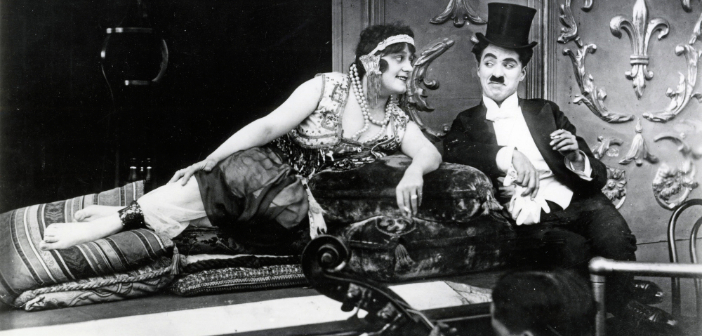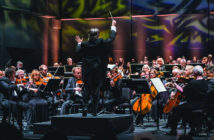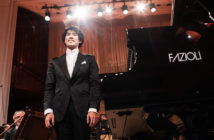All the rage elsewhere in North America, cinema in concert is more complicated in the Maison symphonique, given the paucity of Hollywood blockbusters in French.
Well, then, what about silent film? On Friday, February 17, the OSM collaborated with the Kino organization on an evening of shorts, ancient and modern, accompanied by the Grand Orgue Pierre Béique with occasional contributions from a piano.
Chaplin classics began and ended the almost-two-hour evening. Much of the middle was made up of 21st-century silent films, some of which paid homage to the style of century ago.
First we had Stephan Le Lay’s Le Baiser, a kiss by the seashore turned upside-down (and malevolent) by a “break” in the apparently old film stock. Others were Edna, by Thomas Giusiano and Mathieu Rey, in which an animated Chaplin figure wanders into Jurassic Park, Raiders of the Lost Ark and E.T. as well as Modern Times; Gaëlle Quemener’s Le nouveau bureau, in which an easygoing office worker encounters a desk with a mind of its own; and David Émon-Ferrat’s Albert, starring the director’s dog in the title role as a catalyst in a domestic breakup: as well as Norman McLaren’s well-known (but in my view unduly harsh and pessimistic) Neighbours of 1952.
All of the above, as projected on a rather small screen high above the stage, were worth watching. Musical contributions (allegedly improvised, but surely with some forethought) varied in value. In Chaplin’s A Night in the Show (1915), Samuel Liégeon, seated at the console on stage, seemed content with a circus sonority pumped out in regular time.
Georges Méliès’s famous Le voyage dans la lune of 1902 (you have probably seen the image of the rocket landing in the eye of the man on the moon) received a rather generalized four-hands treatment from Liégeon and another Frenchman, Baptiste-Florian Marle-Ouvrard. Neither the launch of the rocket nor the dramatic rising of the Earth as seen from the moon elicited any specific musical response.
The artists supported Chaplin’s The Vagabond (1916) with organ and piano, an effective combination, the latter instrument providing a percussive element that even the mighty Casavant cannot supply. Curious that the Little Tramp’s violin serenade of the abused servant-girl was rendered as a piano solo. Something wrong with the violin stop on the organ? Happily, the players produced an impressive apotheosis at the end, as the girl realizes that her future lay with the tramp. Not all lovers are so wise.
OSM organist Jean-Willy Kunz provided commentary (and undertook onstage interviews) almost exclusively in French. Oh, well. There was enough talking as it was.















